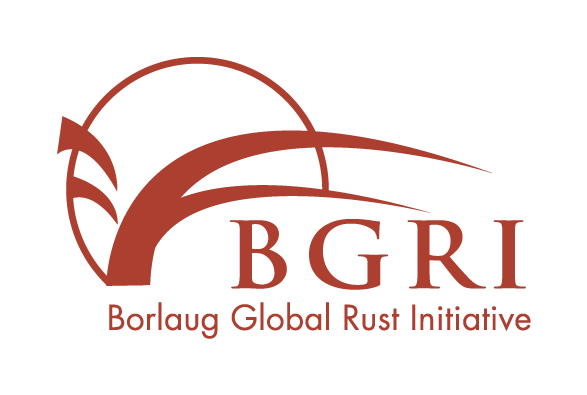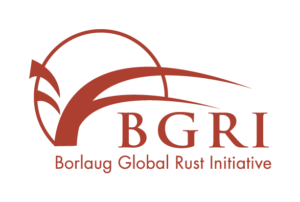Wheat is more widely grown than any other crop in the world. On average, each person on earth consumes 68.2 kilograms of the grain each year. That equates to about 630 calories per day per person, or one-half to one-third of the minimal energy requirements of most adults. It’s not a stretch to say that humanity runs on wheat. So when a new strain of wheat stem rust—a fungus that can destroy a field of wheat in a matter of days—was discovered in Uganda in the late 1990’s, the world took notice.
“Wheat stem rust is the most devastating of plant diseases,” says W. Ronnie Coffman, International Professor of Plant Breeding and Genetics and director of the College of Agriculture and Life Sciences Office of International Programs. “It’s the source of the great Biblical plagues. The fungus puts out billions and billions of spores that can blow hundreds of miles in a day.”
Stopping a Catastrophe in Its Tracks
More than 90 percent of the world’s wheat was susceptible to this new strain of stem rust, known as Ug99. A potential food crisis loomed large if the fungus had spread unchecked across the earth. While fungicides could be used to combat the disease, the only real way to stop it was to breed new cultivars of wheat that were immune to this strain of the fungus.
“We had durable genetic resistance to stem rust beginning in 1970,” Coffman says. “That lasted three decades. In fact, it lasted so long people became complacent. When they first found Ug99 in Uganda, people didn’t believe it was true, but the pathology confirmed it was a new strain.”
Coffman knew that a global undertaking was needed. In 2008, he joined with the late Norman E. Borlaug—Nobel Peace Prize winner, Distinguished Professor of Agriculture at Texas A&M, and the man who developed the original stem rust–resistant wheat strain in 1970—to initiate the worldwide project known as Durable Rust Resistance in Wheat. The project—funded by the Bill & Melinda Gates Foundation for a total of $66 million in two phases over eight years and supplemented by additional funds from the United Kingdom Department for International Development—sought to protect wheat production by breeding Ug99-resistant wheat.
“It’s worked extremely well,” says Coffman. “We’ve mobilized the global wheat community.” The project includes a consortium of over 20 different research organizations, as well as the Borlaug Global Rust Initiative, a wheat surveillance program that currently includes 37 countries.
From its beginnings in Uganda, Ug99 spread up and down the east coast of Africa and then jumped the Red Sea to Yemen in 2006 and spread to Iran in 2009 where it has been halted so far. Meanwhile, the Durable Rust Resistance in Wheat project has been busy breeding, field testing and releasing new varieties of wheat with resistance to the rust. The primary breeding is done at the International Maize and Wheat Improvement Center (CIMMYT) in Ciudad Obregón in northwestern Mexico. Testing sites are situated all over the world, but primarily in the Great Rift Valley of Kenya and Ethiopia.
Durable Wheat by Hand
Wheat, along with rice, is one of the major world crops that is bred by public institutions using public funds, rather than by the private sector. This means that governments and research facilities must take into account public opinion in their home countries. Right now, public opinion is against the use of biogenetic techniques for developing wheat, so the researchers use conventional breeding methods.
“We cross between parents by hand,” says Coffman, “rather than using biogenetic techniques for inserting genes. By observing traits, breeders can screen for resistance to stem rust because there are certain observable traits connected to resistance.” Breeders can only do this for one gene at a time, because once a plant has resistance, they can no longer tell through observation whether additional genes are providing further protection. To truly wipe out stem rust, breeders would need to use biogenetic techniques to insert three or four stem rust–resistant genes at a time into a cultivar, Coffman says. With that many resistant genes, the chance of stem rust mutating simultaneously to beat them all is essentially nil.
Even though they’ve been limited to conventional methods, breeders have been able to develop about 63 stem rust–resistant varieties of wheat. Many of them rely on multiple minor gene resistance, also known as adult plant resistance, and they are expected to be durable.
Keeping Wheat Durable
Given stem rust’s significant rate of mutation, however, new strains may develop in a few years that will overcome the wheat’s resistance.
With this in mind, Coffman and his fellow researchers have just been awarded a third grant from the Bill & Melinda Gates Foundation for $24 million to initiate a new project: Delivering Genetic Gain in Wheat. This project will continue to breed for a long-term durable resistance to stem rust, but it will also broaden the focus to include other wheat diseases such as yellow rust—another significant fungus that occurs widely and reduces yields by 10 to 40 percent. In addition, the project will seek to develop heat-tolerant wheat varieties to counter the effects of climate change.
“Heat tolerance is a big challenge facing wheat,” says Coffman. “The world is getting warmer and night temperatures are going up.” Wheat likes warm, sunny days and cool nights. Researchers at CIMMYT have determined that wheat yield decreases at the rate of one ton per hectare for every one-degree increase in night temperature. “That’s formidable,” says Coffman, “especially when you know that, at a minimum, world temperatures are expected to go up a couple of degrees in the coming decades.”
A Research Leader
Coffman sees his role as that of research leader rather than as a hands-on researcher. “What I do is quite different from what a typical scientist at Cornell does,” he says. “My lab is the world. I get different entities involved in different parts of the world, depending on the need and scope of the problem.”
In 2013, Coffman won the inaugural World Agriculture Prize in recognition of his lifetime achievements. Supported by Nanjing Agricultural University, the prize is from the Global Confederation of Higher Education Research Associations (GCHERA), an alliance of 600 worldwide agricultural universities. “It was a real honor to be the inaugural winner,” Coffman says. “I feel the award is more for Cornell than for me. It’s a reflection of Cornell’s reputation as a research leader and our ability to facilitate and coordinate a global research network where everyone involved feels their role is appropriately recognized and supported.”
Author
Jackie Swift
This article originally appeared on Cornell Research and Innovation website.





